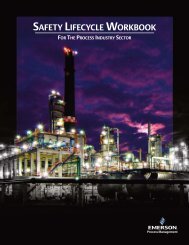jfq-76
jfq-76
jfq-76
Create successful ePaper yourself
Turn your PDF publications into a flip-book with our unique Google optimized e-Paper software.
First Brigade Combat Team, 1 st Cavalry Division, Soldiers review attack plan with Moldovan soldiers<br />
before situational training exercise at Hohenfels Training Area, Germany, October 2014 (U.S. Army/<br />
Sarah Tate)<br />
in the ways we manage our forces—that<br />
is, how we dynamically and purposefully<br />
employ assets around the globe. We<br />
must better identify opportunities that<br />
generate the greatest advantages and<br />
results using the right tools, in the right<br />
places, and with the right partners.<br />
Most of our Joint Force works in<br />
either the realm of combatant commands<br />
or of the military Services. There is always<br />
tension managing the force. The combatant<br />
commands tend to want as much<br />
forward-positioned force structure as possible<br />
not only to shape, deter, and assure<br />
and but also to “fight tonight” if required.<br />
The Services want to support the demand,<br />
but they also have a responsibility to sustain<br />
the readiness and health of the force.<br />
This is a healthy tension in my view, but<br />
one that can get out of balance.<br />
Becoming more agile requires finding<br />
sustainable ways to manage the global<br />
force to deter adversaries and reassure<br />
allies while not destroying readiness.<br />
Concurrently, it means giving the combatant<br />
commands a clear understanding<br />
of what is possible in terms of resources,<br />
balanced with the needs of the Services<br />
to maintain a healthy force, as well as<br />
constantly assessing risk to mission and<br />
risk to force.<br />
A More Dynamic Global<br />
Operating Model<br />
As we look back at the assumptions<br />
underlying the balance in our force<br />
posture since the end of the Cold War,<br />
it is clear our global posture is not—and<br />
should not be—immutable. Nor is it<br />
one size fits all. Posture evolves over<br />
time and should change to adapt to the<br />
global security environment and the<br />
threats that we face.<br />
Accordingly, we are in the process of<br />
adapting our global force management<br />
mechanism from strictly demand-based<br />
to something more resource-informed,<br />
thereby allowing the Joint Force to<br />
protect U.S. national security interests in<br />
ways that are different, more deliberate,<br />
and more sustainable.<br />
At its core, this means determining<br />
the proper mix between forward-presence<br />
forces in geographic combatant<br />
commands and surge forces based in the<br />
continental United States and U.S. territories.<br />
We have kept an eye focused on<br />
forward, highly ready forces in part because<br />
we have grown accustomed to the<br />
big payoff. But now we have to reconsider<br />
our “stance” to ensure we maintain<br />
our “balance.”<br />
This we know: our Joint Force must be<br />
able to dynamically reconfigure and move<br />
rapidly, integrating capabilities and partners<br />
across domains and boundaries not<br />
only to respond to emerging events, but<br />
also to surge ready forces from the continental<br />
United States or among geographic<br />
theaters to seize and maintain the initiative.<br />
The details of how we are going to do<br />
this are very much part of the ongoing<br />
dialogue. We are discussing how to baseline<br />
theater presence, we are determining<br />
what innovative ways we can apply to<br />
maintain forward presence as we rebuild<br />
our readiness, and we are thinking about<br />
how best to prioritize capabilities to<br />
preserve flexibility. Any choices in these<br />
areas must improve our ability to seize<br />
opportunities that demonstrate U.S.<br />
leadership and strength to allies, partners,<br />
and adversaries.<br />
I encourage you to become a part<br />
of this dialogue. The decisions we make<br />
now will define our future for decades<br />
to come, both in terms of how we react<br />
to crises and how we can help shape the<br />
international environment. JFQ<br />
Martin E. Dempsey<br />
General, U.S. Army<br />
Chairman of the Joint Chiefs of Staff<br />
JFQ <strong>76</strong>, 1 st Quarter 2015 Dempsey 5




